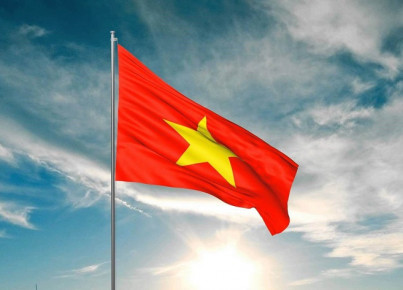ASEAN countries have been hit hard by US tariffs. Donald Trump’s unconventional trade policy calls for equally unprecedented responses. For now, caution and a willingness to negotiate prevail — but the role of Washington (and Beijing) in the region is set to change
Article by Pierfrancesco Mattiolo
In the end, the tariffs promised by Donald Trump have come into effect. Not the ones announced during the notorious Liberation Day on 2 April—which were suspended a few days later for a period of three months, likely in reaction to the negative answer from Wall Street. For now, only a general tariff of 10% will apply, with some exceptions: tariffs exceeding 100% on Chinese imports; 25% duties on steel and aluminium; and certain products, such as semiconductors, exempted. During the election campaign, Trump floated the idea of raising tariffs by between 10% and 20%, so the current structure can be viewed as a fulfilled promise—although the unpredictable nature of the current US Administration makes it difficult to foresee what tariffs will be in place in a year, a month, or even a week. The 10% tariffs remain substantial and may mark the beginning of a period of deep uncertainty for the global economy.
Should the tariff plan presented by Trump during Liberation Day eventually be implemented, tariffs on nearly all ASEAN countries would rise above the 10% baseline. In descending order, Cambodia would face a 49% tariff; Laos, 47%; Vietnam, 46%; Thailand, 36%; Indonesia, 32%; Malaysia and Brunei, 24%; the Philippines, 17%. Only Singapore would remain at 10%, as it is the only country that imports more from the US than it exports. As many analysts and international media outlets have pointed out, these so-called “reciprocal tariffs” are not, as claimed by the White House, based on the tariffs these countries impose on American goods, but rather on their trade deficits with the United States. This approach has drawn criticism, and it places these countries in a difficult position: even if they lower tariffs on US products, the trade deficit might be reduced—but not reversed entirely, and certainly not through government initiative alone. Furthermore, the mercantilist outlook of the current US Administration does not consider the fact that American companies import many low-cost goods from abroad, then benefit from high margins when selling the final product to consumers, whether domestically or internationally. The US economy, being the most advanced in the world, is also in a position to focus on exporting services and attracting investment and savings, in accordance with the principle of specialisation. Trump’s stance disrupts the vision of international trade that has shaped the agenda of most governments around the world for decades.
Another unorthodox element of Trump’s trade policy is the imposition of a general tariff on all goods, from all countries. Typically, trade policy avoids “one-size-fits-all” measures. Goods not produced domestically tend to face low tariffs; those that a country wishes to continue producing—perhaps for political or strategic reasons—are subject to higher duties. To gain greater access to another country’s market (i.e., to have tariffs on one’s goods reduced), it is customary to offer reciprocal access, selecting which goods make the most sense to include in a bilateral tariff reduction. The EU’s trade policy in the region, as demonstrated by free trade agreements with Vietnam and Singapore, follows this approach. Trump, by contrast, appears to prioritise these considerations only at a later stage, for instance, by exempting essential or foreign-manufactured products like semiconductors from tariffs.
Finally, a key divergence between Trump’s trade policy and more “conventional” approaches concerns his stated objectives—or rather, the absence of a single, clearly defined goal. Listening to the President and his advisers, the Administration appears to be pursuing multiple objectives, some of which are even contradictory. Is the aim to increase federal revenue to offset other tax cuts? To bring certain industries back to the US? To reduce or eliminate trade deficits? To secure concessions on other political or economic matters? Or to pressure third countries not to cooperate with America’s geopolitical rivals, China chief among them? As The Diplomat has noted, this ambiguity makes it difficult for ASEAN nations (and others) to understand Trump’s intentions and how to meet them—leading to the conclusion that perhaps Washington has no intention of removing the tariffs altogether. This worst-case scenario appears to be supported by Trump trade adviser Peter Navarro’s response to Vietnam’s initial conciliatory offers to reduce its tariffs: “(it) means nothing to us”, as Vietnam acts as a “transshipment” point for Chinese goods and is “essentially a colony of communist China.”
How, then, might the governments of the region respond? For now, caution and a willingness to engage with Trump seem to prevail. As Mexico has demonstrated, this approach appears the most effective for delaying the implementation of tariffs. No ASEAN country has imposed retaliatory tariffs; if Trump’s trade policy breaks with long-established norms, so too does the response of trade partners. By choosing this path, ASEAN governments are in part validating Trump’s narrative—namely, that American firms would not face retaliation, as trade partners would instead rush to make concessions. Trump himself used a particularly vivid phrase (to put it mildly) to reinforce this message following Liberation Day. Several ASEAN nations have already offered to reduce their own tariffs and trade deficits by increasing imports of US goods and diversifying their export markets. In the case of Vietnam, while Navarro’s comments offer little encouragement, Trump himself struck a more positive tone—calling a conversation with General Secretary To Lam “very productive.” Hanoi has also started cooperating with Starlink, Elon Musk’s space venture, likely in hopes of gaining an ally close to Trump. Given that the position of the Trump Administration is President Trump’s position, more than the ones of his advisers, having Navarro against and Musk in favour may make little difference—especially as Musk appears increasingly disengaged from Oval Office decision-making.
What will prove more difficult, however, is enforcing a commercial and political break with China. For instance, journalist David Hutt, an expert on Cambodia, has noted that the US might request that Phnom Penh scale back its cooperation with China at the Ream naval base in exchange for reduced tariffs. Yet countries hit by tariffs may choose a different path: if exporting to the US becomes more difficult, they can still trade with one another—including with China. Beijing has seized the opportunity to position itself as a reliable defender of free trade and an alternative to the increasingly unpredictable Washington. As a result, international attention has partly shifted from China’s aggressive trade practices to the US tariffs. Chinese President Xi Jinping has already begun a series of official visits across the region and achieved a symbolic success with the resumption of economic cooperation with Japan and South Korea—something that had not occurred during the Biden years, when the three countries had drifted apart. ASEAN governments, accustomed to hedging relations between the two Pacific powers, will continue to do so—but now with the perception that the United States may have become a less reliable and predictable partner. Nevertheless, America’s “strategic retreat” from the region opens the door not only to China, but also to a stronger role for the European Union as a commercial and strategic partner.
For Southeast Asia, closer ASEAN cooperation may offer a way to resist Trump’s divide et impera approach. The current chair of the Association, Malaysia, has pledged to coordinate a collective response to this challenge to its export-driven economic model. While member states have been affected to varying degrees, compared to the tariff measures during Trump’s first term, the risks now appear far greater than the opportunities. In recent years, some economies—Vietnam’s, in particular—had benefited from the US-China decoupling, attracting a significant share of the production destined for the American market. But this very success increased their trade deficit, leading to the higher tariffs imposed by Trump. The message of Liberation Day is clear: winning a greater share of the US market and becoming increasingly reliant on exports for growth could ultimately put a country at risk in the long run. While the trade tensions of Trump’s first term resembled a zero-sum game with winners and losers—consistent with what seems to be Trump’s worldview—this time, it appears that everyone may stand to lose. The uncertainty caused by Trump’s mercurial policies, which do not align with established economic thinking, risks having a negative impact on investment and the global economy as a whole.






